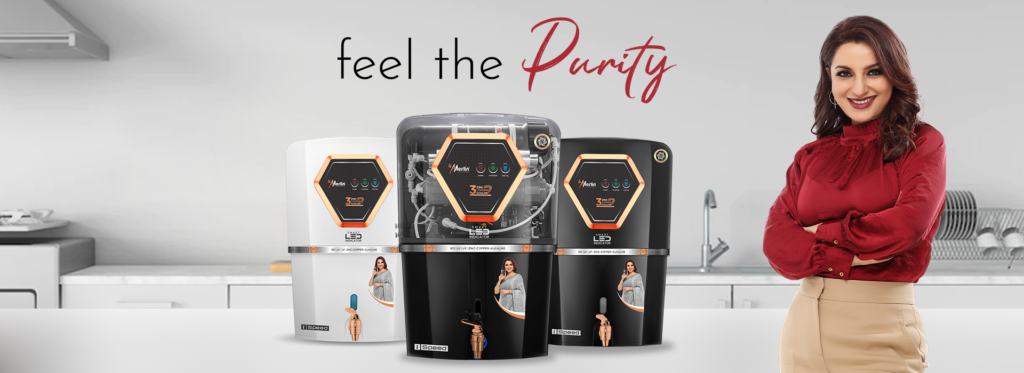Clean water is necessary for our health, but it’s threatened by pollutants and contaminants. Water filtration is a necessary tool for keeping us healthy. Without filtration, we expose ourselves to health risks from drinking impure water. One of the most effective ways to filter water is with a carbon water filter. These filters use activated carbon to remove common contaminants like chlorine and sediments as well as more complex impurities like volatile organic compounds and heavy metals.
This article will explore the importance of water filtration and explain pre carbon filter, including their benefits and applications. You’ll learn what you need to know about ensuring the purity of your drinking water.
What is a Carbon Water Filter?
An activated carbon filter is a system that uses activated carbon to improve water quality. It works by trapping impurities in water as it goes through the porous surface. This makes it easy to catch chemicals like chlorine, volatile organic compounds (VOCs), and various chemicals. This results in cleaner, better-tasting water. Water filters are popular for improving both the taste and safety of drinking water, making them essential for homes and businesses seeking high-quality water filtration solutions.
Benefits of Using Carbon Water Filter
Here are the benefits of using water filters based on the specified points:
- Removal of Contaminants:
Water filters remove contaminants, like chlorine, volatile organic compounds (VOCs), sediment, and chemicals. This makes the water safe for your health.
- Improved Taste and Odor:
Ro Carbon filter improve the taste and smell of water by removing chlorine and certain contaminants. This makes your water more pleasing to drink.
- Healthier Drinking Water:
Water filters reduce health risks from harmful contaminants, making drinking water healthier. Clean and purified water is vital for your health.
- Economic Savings:
Using water filters can save money in the long run. They stop you from buying expensive bottled water, and they also reduce the cost of plumbing and appliances.
- Environmental Sustainability:
Kitchen tap water filter help reduce plastic waste and promote a greener lifestyle. They do this by reducing the consumption of plastic water bottles.
- Convenience:
Having a water filter system in your home is convenient and peaceful. You always have clean and safe water without the hassle of buying, storing, or disposing of bottled water.
Types of Carbon Water Filter
Water filters come in different types, each suited to a different type of filtration. Here are some common types:
- Activated Carbon Block Filters:
These filters use compressed carbon particles to make a solid block. They’re good at removing contaminants, like chlorine, sediment, and VOCs. Activated carbon block filters provide great water purification and improve taste and odor.
- Granular Activated Carbon (GAC) Filters:
GAC filters use loose carbon granules to charcoal water filter water. They are good at removing chlorine, taste, and odor, but they may not filter out some smaller contaminants well. They are often used in point-of-use systems, like pitcher filters.
- Carbon Impregnated Filters:
These filters have activated carbon, which makes them good at catching contaminants. They reduce chlorine and improve taste and smell. Carbon-impregnated filters are commonly used in refrigerators and faucet filters.
- Catalytic Carbon Filters:
Catalytic carbon sediment filter are designed to target specific contaminants, like chloramines and hydrogen sulfide. They have a catalytic surface that promotes chemical reactions to break down and remove these substances effectively.
- Backwashing Carbon Filters:
These systems are for the filtration of whole houses. They have lots of carbon media and can handle high flow rates. They can also remove a wide range of contaminants. They’re good for bigger water treatment applications.
- DIY Carbon Filters:
Some people make their water filters using activated carbon and filtration housing. These systems can be customized for specific filtration needs.
Choosing the Right Carbon Water Filter
You need to choose the right post carbon filter to address your water quality concerns. Follow these steps to help you make an informed decision:
- Water Quality Analysis:
First, understand your water quality. This can include things like where your water comes from (well, municipal), what contaminants are present (e.g., chlorine, lead, VOCs, sediment and carbon filter), and any specific taste or odor issues.
- Identify Filtration Needs:
Determine your filtration priorities. Are you mainly concerned about removing chlorine for better taste and odor, or do you need to filter out a variety of contaminants? Knowing your specific needs will help you choose a filter.
- Filter Type:
Choose the right carbon filter water softener system for your water quality analysis. Activated carbon block filters work well for many applications, but you may need a specialized filter if you have specific contaminants like chloramines or heavy metals.
- Flow Rate and Capacity:
Consider the flow rate and capacity of the filter. Make sure the filter can handle the water demand of your household or the point of use where you intend to install it.
- Certifications:
Look for filters that have been tested and certified by organizations like NSF International. Certification ensures the activated carbon filter material meets specific performance standards for contaminant removal.
- Installation and Compatibility:
Where you install the filter depends on what you want it to do. You can have a whole-house carbon filter, under the sink, or in a refrigerator. Make sure the filter is compatible with your plumbing and space requirements.
- Set a Budget:
Calculate your carbon filter price for the purchase and maintenance costs of the system. Advanced systems may have higher costs at purchase but offer long-term value.
- Research and Read Reviews
Look for reputable brands and read user reviews to find out about filter performance and reliability.
Step-by-Step Installation Guide:
Here’s a step-by-step installation guide for a carbon filter:
- Preparing the Water Source:
First, turn off the main water supply to your home. This stops the installation and prevents water from flowing. Open a nearby faucet to release any remaining pressure and drain water from the pipes.
- Selecting the Installation Location:
Pick a place to install your activated carbon water filter. You can have it installed at the point of entry (the whole house) or at a specific point of use (e.g., under the sink, or in the shower).
- Cutting the Water Line (if necessary):
If you are not able to install your filter in line with the existing plumbing connection, you may need to cut the water supply line at the designated installation point. For a precise cut, use a pipe cutter.
- Applying Teflon Tape or Thread Sealant:
Teflon tape or thread sealant should be used to cover the threads of the filter’s inlet and outlet ports. This makes it impossible for water to leak out.
- Inserting the Filter Cartridge:
Follow the manufacturer’s instructions to insert the filter cartridge into the filter housing. Make sure the cartridge is aligned and sealed properly.
- Connecting the Filter System:
Connect the inlet and outlet ports of the filter system to the water supply line, ensuring they are lined up correctly. Using either a wrench or pliers, firmly attach the connections, but be careful not to apply too much pressure and risk destroying the covering or seals.
- Turning on the Water Supply:
Slowly open the main water supply valve for the filter system to start filling with water. Check to make sure there are no leaks near the connections and tighten them if needed.
- Flushing the System:
Open a nearby faucet and let the water flow for a few minutes to clear away any air and any loose carbon particles.
- Final Checks:
Make sure to shut off the tap you used for flushing. Carefully examine the whole system to check for any signs of leaks or problems.
Conclusion:
Carbon water filters help ensure clean, safe, and great-tasting water. With Merlin Ro water purifier, you can trust top-quality filtration solutions that remove contaminants, improve taste, and promote well-being. Make an informed choice today and experience the benefits of our state-of-the-art water filters. Your journey to better water starts with us.
FAQS:
- What is a carbon filter?
A water filter is a system that uses activated carbon to remove impurities and contaminants from drinking water. It improves water taste, odour, and overall quality.
- How often do I need to replace the carbon filter cartridge?
The frequency of filter replacements varies depending on usage and type, but a common guideline is every 3–6 months. Refer to the manufacturer’s recommendations for your specific filter.
- What contaminants do carbon filter water purifiers remove?
Carbon filters can remove contaminants, such as chlorine, volatile organic compounds, sediment, lead, and some chemicals. The type of carbon filter used determines which contaminants it can remove.
- Do water filters remove minerals from water?
Generally, carbon filters will not take away the necessary minerals from water, making sure it stays in a balanced and healthy state for drinking.
- How does it activated carbon filter working principle?
It works through a process called adsorption, where contaminants adhere to the porous surface of activated carbon as water flows through, effectively removing them.








